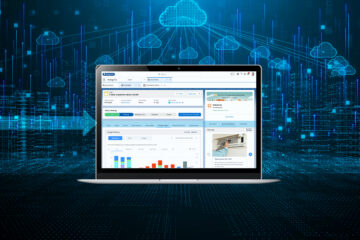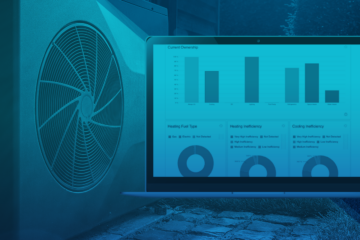To learn how DERs are driving grid stability and peak load planning, check out the PV infographic and the AMI Insights Report.
Years of worsening wildfires from extreme heat and wind in the West, more frequent superstorms in the East and last month’s historic cold in the South have made grid resiliency one of the most urgent energy crises ever faced by the United States.
DERs are Part of the Solution, Not the Problem
In the hours immediately following the power failure in Texas in which power grids operated by ERCOT, SPP and MISO were crippled, critics were quick to point the finger at renewable energy as the cause. In reality, we now know that the failure of gas, coal and nuclear power generation contributed more significantly to the catastrophic power outages as frigid temperatures froze gas wells and the water needed by coal and nuclear plants.
In fact, the deployment of more DERs — including a mix of locally sited solar, wind, energy storage (including EVs) and microgrids — might have mitigated, rather than exacerbated, the impact of the most recent winter storm as well as other unanticipated weather events. DERs generate and store energy very close to where it will be used, reducing risks associated with miles and miles of transmission lines. And, renewables serve to diversify our energy mix overall, protecting energy supply if and when other energy sources fail or underperform.
During the Texas outages, solar + storage owners from across the state shared stories describing how their power remained uninterrupted while the rest of their neighborhoods went dark. Even owners of electric vehicles equipped with vehicle-to-grid (V2G) or vehicle-to-building technology were able to use their car — which is essentially a battery on wheels — to keep the lights on in their homes. Electric car batteries can hold approximately 60 kilowatt hours (kWh) of energy, which is enough to provide back-up power to an average U.S. household for two days. By the year 2030, the cumulative EV battery capacity in the US will more than double the power capacity of all traditional supply-side power plants in the US combined.
Facilitating DER-to-Grid Integration
Modernizing the grid to successfully integrate renewable energy and EV and other battery storage requires an AI-powered strategic approach. Bidgely’s UtilityAI delivers.
UtilityAI empowers utilities with essential AMI data inputs ranging from home-by-home daily solar production patterns to aggregate solar production at the substation level. The ability to better forecast the flow of renewable energy onto the grid at the line level ensures no lines are overloaded and maintains grid stability during outages and maintenance.
Bidgely’s analytics can also inform peak load planning and necessary capital upgrades by accurately predicting the impact of solar down to the feeder or transformer level. Similarly, UtilityAI identifies feeder lines and individual transformers that are likely to come under strain due to EV proliferation to inform grid upgrades
Expanding Solar, Storage and EV Adoption
In order for utilities to realize the potential for DERs as a grid resiliency tool, they need to accelerate solar, storage and EV deployment.
Here too UtilityAI can help. Using AMI-data-informed targeting, UtilityAI identifies homeowners who are most likely to benefit from rooftop solar, such as those who could avoid time of use charges if they reduce their mid-day power consumption. It can also pinpoint those who have a higher propensity to buy an EV, such as customers who have solar installed or live in neighborhoods where there is a high rate of EV ownership. AMI-data can also be used to identify customers most likely to install energy storage, such as those who are exporting a lot of solar energy to the grid who could instead store that excess production to realize maximum return on their solar investment and power security when the grid is unavailable.
Not only do you need to target the right customers, you also need to provide those customers with personalized, compelling and action-oriented communications to make it more likely that they will take action to make a new equipment purchase. UtilityAI allows utilities to present hyper-targeted and relevant renewable energy and EV education and product and service offers in context of individual customer insights and ROI calculations.
Grid Resiliency is Within Reach
There is no single type of energy generation that can solve America’s energy problems, just as no one energy source was entirely to blame for the most recent grid failure in Texas. Though we are moving toward a clean energy future, the near term path forward calls for a well-balanced energy portfolio in which reliable decentralized and diverse energy sources can be called upon and precisely adjusted to match supply with variable demand.
UtilityAI delivers essential grid and customer intelligence that allows utilities to successfully integrate renewable energy and EVs as part of their resiliency strategies and mitigate extreme weather impacts.
To learn how DERs are driving grid stability and peak load planning, check out the PV infographic and the AMI Insights Report.


